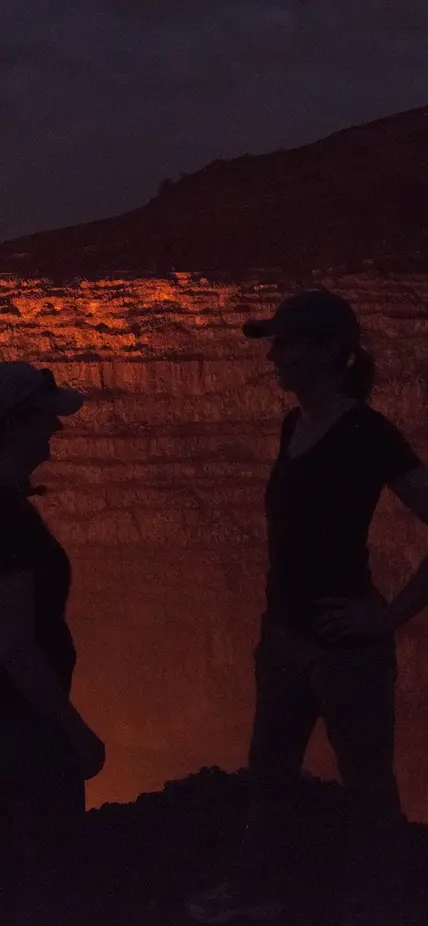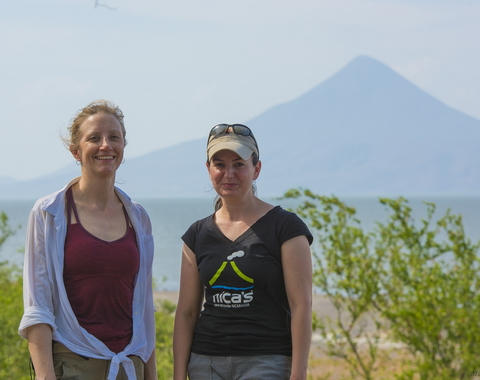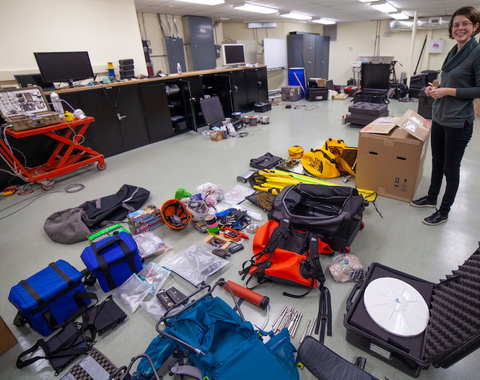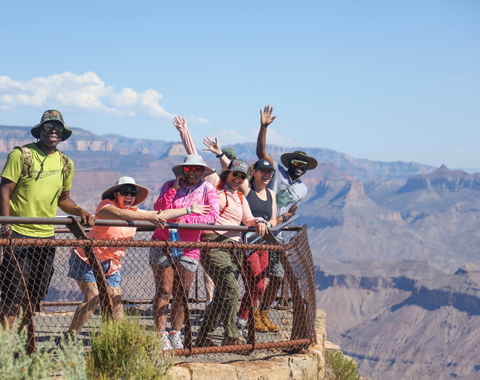Since we first set out to map Earth’s magnetic field in 1904, Carnegie Science has been at the forefront of observational geophysics--the study of volcanism, seismic events, and planetary interior processes, where exploration and determination intersect to uncover Earth’s deepest secrets.
Today, three Staff Scientists at the Carnegie Science Earth and Planets Laboratory uphold that profound legacy: Hélène Le Mével, Diana Roman, and Lara Wagner. Wagner and Roman are Carnegie Science’s inaugural Harry Oscar Wood Chairs in Seismology. In a field where women are still underrepresented, this all-woman team exemplifies the intellectual rigor and pioneering spirit required to uncover the secrets beneath the Earth’s crust.
From installing monitoring equipment on active volcanoes to venturing into the wilderness to implement vast seismic arrays, this dauntless team of scientists sees the world as their laboratory as they piece together the complex inner workings of our planet.
As you read below, you’ll learn more about their work and hear from them about what it means to be a woman in geophysics today.
Hélène Le Mével: Uncovering the Gravity of the Situation
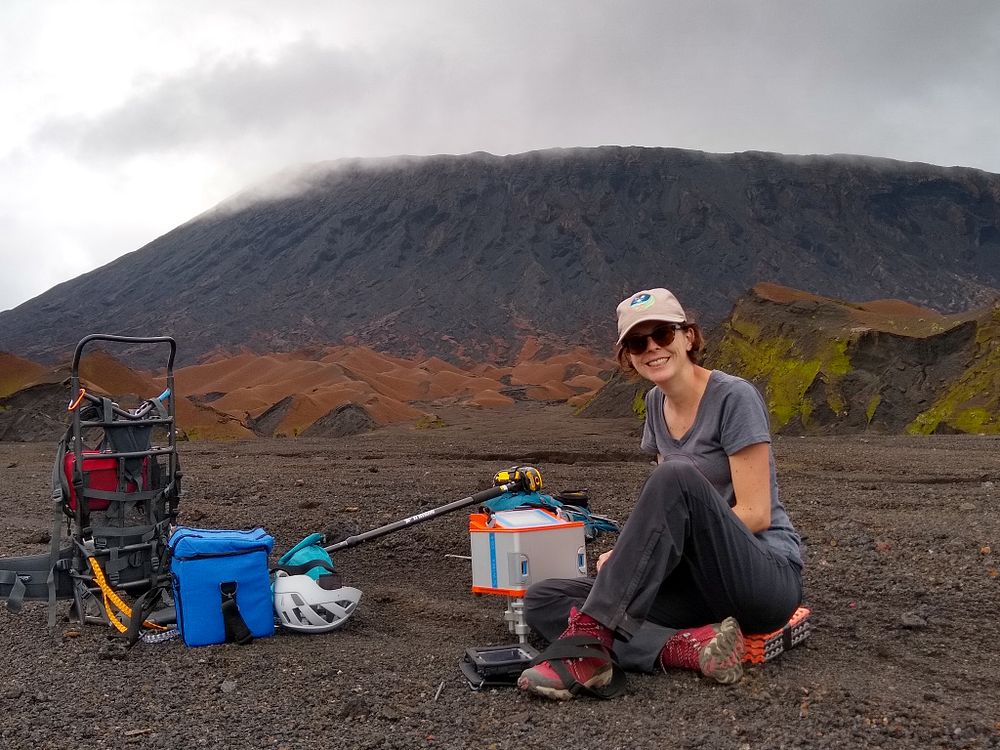
Le Mével leverages satellite-based measurements like InSAR and GPS to observe how the Earth deforms before, during, and after volcanic eruptions. These changes at the surface indicate how much magma is stored underground and where it’s moving—key clues Le Mével uses to uncover patterns in the timing of eruptions.
She's also adding new techniques—like measuring the strength of Earth's gravitational field—to the volcano monitoring toolkit. Le Mével explained, “I use both field and satellite-derived gravity data, an often underused dataset.”
For example, she and her team recently used gravity data to study the Hunga Tonga-Hunga Ha’apai volcano. The underwater volcano erupted in January 2022, triggering both the largest volcanic explosion on record and a devastating tsunami. Most of Earth’s volcanoes are underwater, making them hard to monitor via traditional techniques. In this study, Le Mével and her team used satellite-derived gravity data to capture snapshots of the volcano’s magma chambers before and after the eruption. This new remote technique could make watching these elusive submarine volcanic systems easier.
“Following my recent work on the Hunga volcano, I’m pursuing my interest in submarine volcanism and combining seabed-mapping techniques with satellite-derived gravity to develop new methods for imaging submarine magmatic systems,” said Le Mével. “It’s been fascinating, and I hope to have future postdocs working with me on a variety of submarine volcanoes.”
This determination to explore new frontiers typifies the ethos of Carnegie’s geophysics group.
Diana Roman: Putting Volcanoes on the Clock
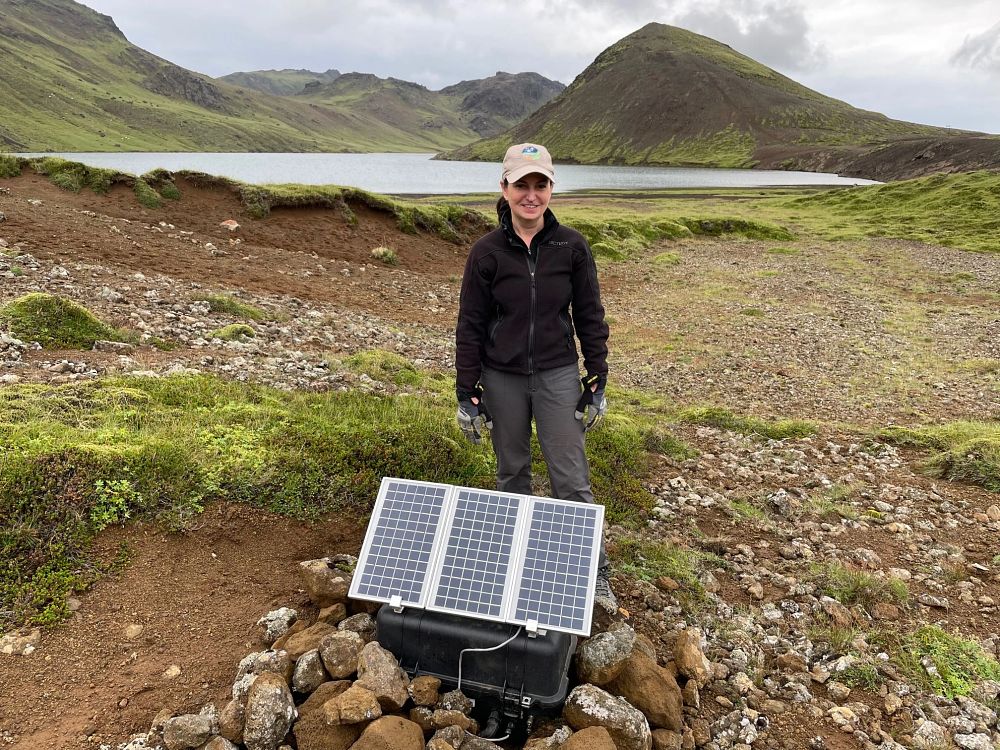
As a volcanologist, Roman aims to understand how volcanoes work on timescales ranging from centuries to seconds. With expertise in both volcanology and seismology, Roman looks for patterns that will allow scientists to better predict and mitigate the hazards of volcanic eruptions. Her work often benefits from collaboration across disciplines as she seeks to uncover the full picture.
Roman said, “Although I’m a geophysicist, my approach is strongly informed through multidisciplinary collaboration with petrologists, gas geochemists, and geodesists.” She continued, “While I’m using tools like seismic arrays to look at volcanoes from the outside in, petrologists are looking from the inside out. The two approaches work very well together.”
For example, Roman and her colleagues recently published a study investigating the 2021 Tajogait eruption on La Palma in the Canary Islands, Spain. By integrating petrology, seismology, and advanced spectroscopic analysis, the team could rapidly and precisely determine the depth of the volcano’s magma reservoir, demonstrating the cross-disciplinary technique’s potential as a tool for near-real-time volcanic monitoring.
This new approach bridges the gap between scientific disciplines and enhances our ability to predict and respond to volcanic eruptions.
Lara Wagner: Riding Seismic Waves
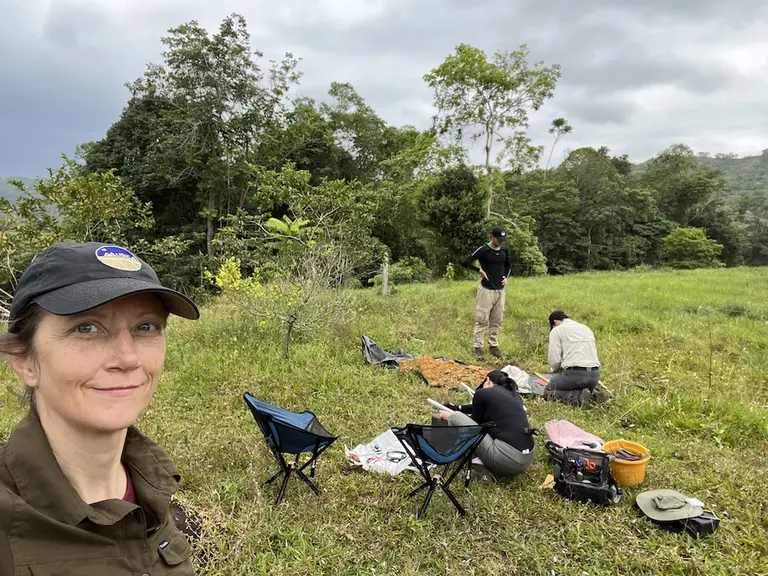
Wagner's work to understand subduction zones—areas where tectonic plates converge and an oceanic plate slides beneath a continental plate into the mantle—advances our knowledge of modern Earth’s ongoing structural processes while shedding light on the planet’s early history and evolution.
Wagner harnesses seismic waves to visualize the planet’s interior, similar to how doctors use CT scans to see inside the human body. To capture those waves, Wagner deploys extensive seismic arrays across challenging terrain—like her recent deployment of more than 65 seismometers across the Colombian Andes.
More specifically, she seeks to understand flat-slab subduction, an uncommon form of subduction in which one tectonic plate slips beneath another and moves horizontally for long distances before continuing to sink into the Earth. Because these slabs can travel hundreds of miles before they descend, flat slab subduction zones can cause damaging earthquakes much farther from plate boundaries than traditional subduction zones. Flat slabs also form large inland mountain ranges—like the Rocky Mountains—and affect the composition of the continental crust by releasing seawater and dissolved minerals into the overriding plate.
Recently, she and her colleagues used a combination of mathematical models and observational constraints from the Pampean flat slab in South America to better understand how regions of flat-slab subduction change over time, and how that, in turn, affects their transport or release of fluids, their ability to form mountains and/or volcanoes, and their seismic activity.
“The processes involved in this type of subduction can teach us a lot about how fluids are cycled through the Earth’s interior and the role these fluids play—and have played—in stabilizing and modifying the continental crust,” says Wagner.
Blazing the Path for Women in Geophysics
“I’m a scientist who happens to be female. It’s an identity independent of my gender,” said Roman when asked what it’s like to be a woman in geophysics.
The observational geophysics group at Carnegie Science are not just trailblazers in geophysical research; they are also champions of gender diversity in a discipline where women have historically been underrepresented. According to a 2021 study, only 7 percent of geophysics faculty identify as female. As an all-woman team, their leadership and accomplishments challenge the status quo and provide a glimpse of a more inclusive future.
“It is slowly getting better,” said Le Mével, “but there is still a huge lack of diversity—gender and others—in the geosciences.”
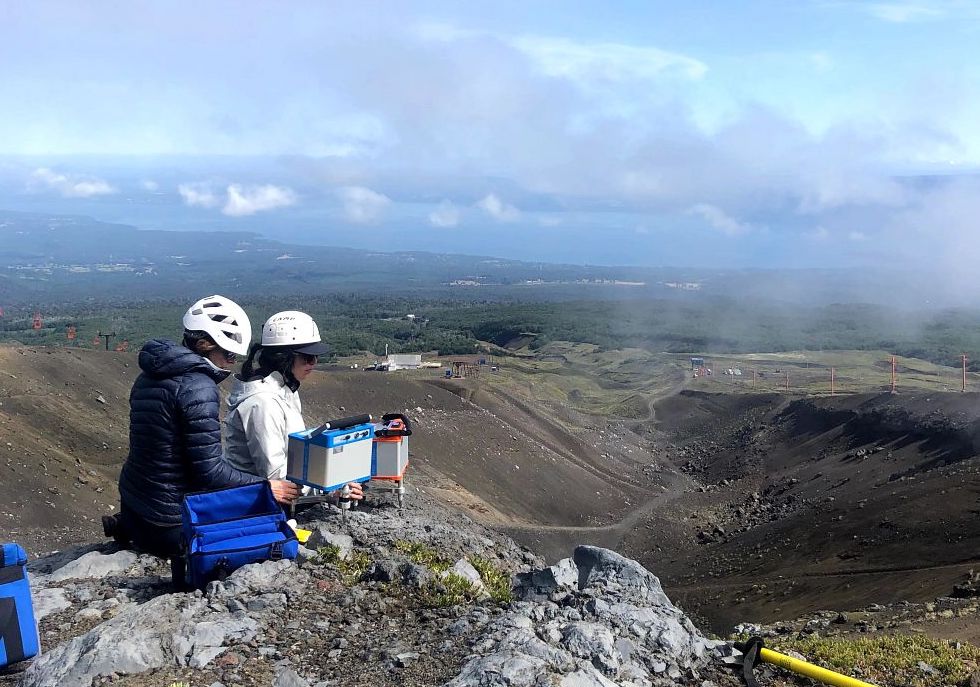
Through their work, they exemplify the change they wish to see in the world, providing a role model for future generations, addressing the “leaky pipeline” that sees fewer women in senior scientific roles, and advocating for diversity in all its forms.
“By the time you’re looking at people with my level of seniority and higher, the lack of diversity on all axes is far more apparent,” explained Roman. “We want to make sure that’s not because there are systemic barriers to progressing in one’s career.”
Wagner added, “Representation matters. It’s valuable to our postdocs when there are people in senior positions who share their identities. Carnegie is doing a better job than most on hiring women—particularly in geophysics.” She continued. “We still have a way to represent other types of diversity within the ranks of our staff scientists more fully.”
Roman agreed, “We’re three straight cis white women. It’s progress, but it’s diversity on one narrow axis.”
Over the course of their careers, these women have seen institutions take the issue of diversity seriously. But sometimes, those changes come with a greater burden for women and other underrepresented groups in science.
As Roman shared, “The good changes are that there is an effort to balance gender and a recognition that science is genderless. However, until the actual percentages balance out, the people who represent their particular diversity axis are often asked to fill that representational role more. There is an imbalance of effort required.”
Through their work, these women extend the legacy of Carnegie Science’s observational geophysics group, driven by a shared mission to explore and understand some of our planet’s most formidable natural phenomena.
Their collective story is not just one of scientific inquiry but of breaking barriers and forging paths for those who follow. In their dedication to advancing geophysical research and their commitment to fostering an environment where diversity is celebrated, they serve as inspirations for future generations of scientists.
